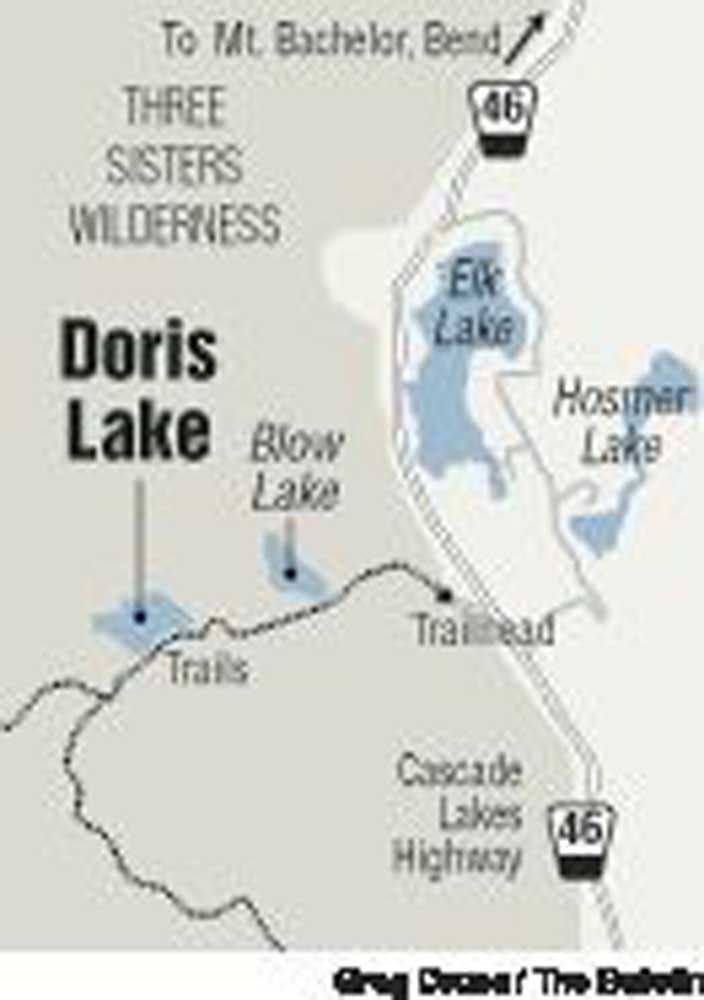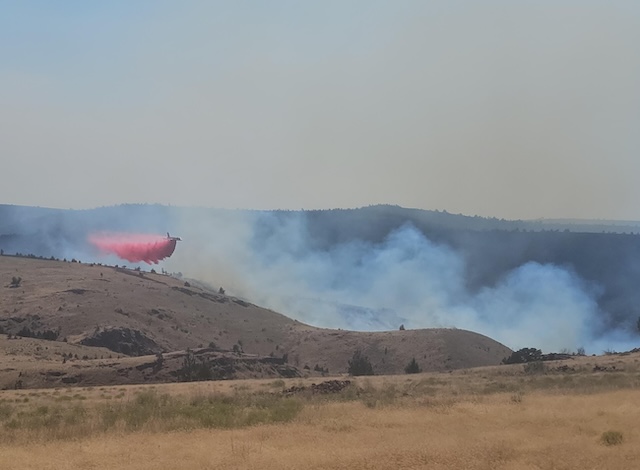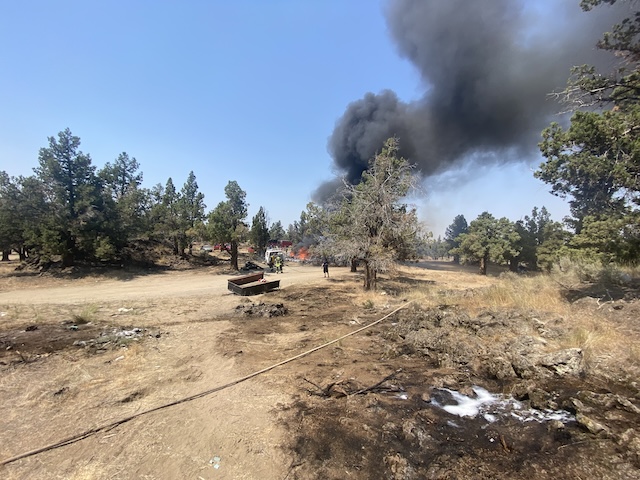Take a hike to the secluded lakes along Six Lakes Trail
Published 8:45 am Friday, August 21, 2020

- Doris lake trail
Six Lakes Trail can feel like a misnomer because there are only two.
The full trail connects and joins others that lead to other fabulous lakes such as Lucky, Leech, Mink and Senoj, but the main trunk of the trail travels about 6 miles until it meets the Pacific Crest Trail. Along those 6 miles, there are several bodies of water that are located just off the trail, mainly ponds. But the real gems of the trail are Blow and Doris lakes which are within the first half of the hike.
Trending
The trail to the lakes is fairly easy to navigate with only a gradual elevation gain of about 400 feet over the 2.5 miles to Doris Lake, making it a great quick day hike or, for me, an easy introduction to backpacking.
The trailhead begins just off the Cascade Lakes National Scenic Byway between Elk and Lava lakes. The turn is a “blink and you’ll miss it” stop, so make sure you pay attention to catch the small trailhead sign.
The large and dusty parking area has the only toilet you will find in the area, after you’re on the trail you’ll have to commune with nature and pack out any paper products you pack in. There are also no garbage cans or other trash receptacles once you get on the trail, so be prepared to practice Leave No Trace once you set out. These practices include packing out dog waste and not just leaving it in a bag on the side of the trail.
For more details on how to leave no trace visit the Deschutes National Forest Website.
At the start of the trail, tall lodgepole pines offer shade in the late afternoons and evenings, but hikers in the morning may have trouble finding shade, for a while at least. Almost immediately the trail enters the Three Sisters Wilderness Area.
This means that wilderness regulations must be followed including limits on group sizes to 12 heartbeats or less (this includes stock), camping is limited to 100 feet away from water and wilderness permits are required.
Trending
The trail gradually inclines, so gradual that you’ll barely notice it unless you’re carrying a 40- to 50-pound backpack. But because of the well-maintained path, there is nothing complicated about the trek into the woods. Crossing over seasonal mountain streams has been made a breeze, too, with the presence of a few footbridges. Even if the water has all but disappeared from the streambeds, wildflowers create a colorful display intermixed with the greens and browns of the forest beyond.
As the trail slowly climbs farther into the mountains, the trees begin to change. Suddenly, the lodgepoles are outnumbered by towering Douglas firs and Western hemlocks of the Cascades, many draped with lichen called old man’s beard. The temperature drops here, too; the forest is cooler and covered with shade.
Blow Lake is the first lake on the trail, and you may need to climb over a few logs to reach the water. The deadfall isn’t anything too large, but be mindful of your steps regardless.
The water here is crystal blue, and the lake is long, extending in a northward direction with its banks covered in downed trees. There is a social trail that goes a little farther along the lake, but nothing too official, meaning more trees to clamber over. The 45-acre lake is also stocked with fish every two years, according to the Oregon Department of Fish and Wildlife.
But Doris is the real gem here. A little bigger and with more shoreline to relax on, the lake is pristine, and the water is nearly invisible. It’s shadowed by a small butte with a somewhat jagged exposed rock cliff face on the northwest side.
The lake is deeper than you may think, according to oregonlakesatlas.org. The middle of Doris Lake plunges 90 feet, allowing the stocked brook trout to have plenty of room to swim.
People can also enjoy a cool dip in the water, too, which is surprisingly warm for a mountain lake.
Doris Lake is also the better of the two lakes in terms of backpacking in for an overnight trip because of the better shoreline.
Because of the lake’s relatively short distance and easy trail access, it is a great way to get a taste of camping in the wilderness.
I personally had never gone backpacking before despite being a fairly avid hiker, camper and nature lover. So I thought now was a great time to try it.
It is important to remember when backpacking or camping in a dispersed area, wildlife is more likely to wander through your campsite than in designated campgrounds (which can still happen). It sounds simple, but it’s easy to forget when you are enjoying spectacular views of the Milky Way at night and all of a sudden there are two glowing eyes staring at you from just beyond the reach of your lantern.
Luckily for me, I discovered later that it was just a deer, but for the three hours between seeing those reflective eyes and then seeing the rest of it were harrowing for this city girl.
When you’re not terrified of the wildlife of the woods, take a chance to look up at night while at Blow and Doris lakes. With no light pollution and a higher altitude, stargazing is second to none.
On a moonless night and with the galaxy reflected in the mirrorlike waters of the lakes, it feels like you’re standing with those billions and billions of stars in the cosmos.
The hike out during the morning was crisp and refreshing.
Another good reminder while traveling on Six Lakes as with all other trails: have a mask ready to be worn at all times for the safety of other hikers if you cannot maintain 6 feet of distance, which on most trails, you can’t.
Six Lakes Trail is located within the seasonal closure area of the Cascade Lakes National Scenic Byway, so come winter it will be inaccessible without some major snowshoeing in. But for now, there is still plenty of time to explore the gorgeous lakes on the trail.








